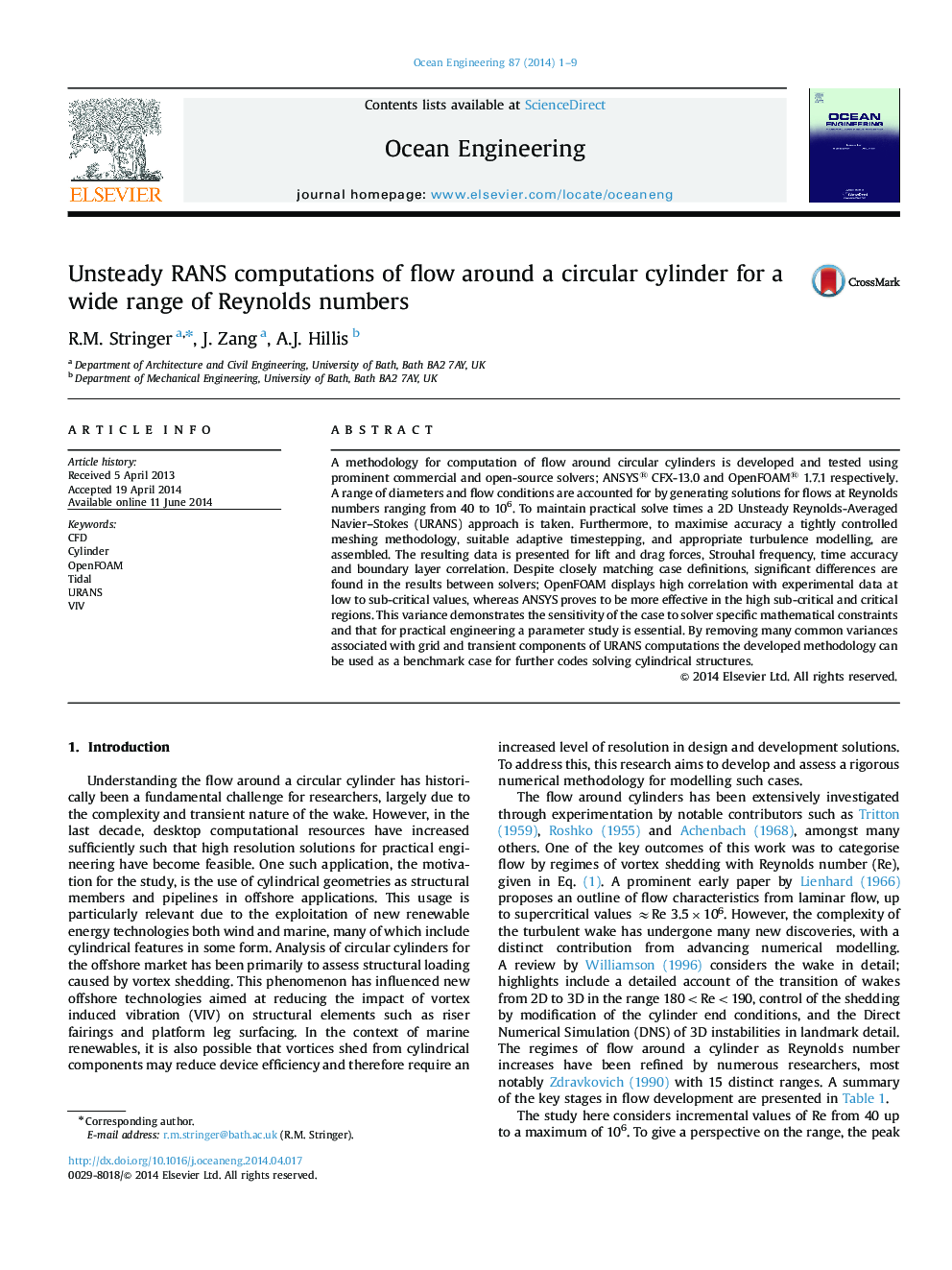| Article ID | Journal | Published Year | Pages | File Type |
|---|---|---|---|---|
| 1725578 | Ocean Engineering | 2014 | 9 Pages |
•Flow around a circular cylinder is modelled for a wide range of Reynolds numbers.•Methodology to achieve low y+ and capture the boundary layer is presented.•Comparisons are made between commercial and open-source solvers.•Low Reynolds number cases show high quantitative agreement with experiments.•OpenFoam is shown to be suitable for quantitative engineering up to Re of 104.
A methodology for computation of flow around circular cylinders is developed and tested using prominent commercial and open-source solvers; ANSYS® CFX-13.0 and OpenFOAM® 1.7.1 respectively. A range of diameters and flow conditions are accounted for by generating solutions for flows at Reynolds numbers ranging from 40 to 106. To maintain practical solve times a 2D Unsteady Reynolds-Averaged Navier–Stokes (URANS) approach is taken. Furthermore, to maximise accuracy a tightly controlled meshing methodology, suitable adaptive timestepping, and appropriate turbulence modelling, are assembled. The resulting data is presented for lift and drag forces, Strouhal frequency, time accuracy and boundary layer correlation. Despite closely matching case definitions, significant differences are found in the results between solvers; OpenFOAM displays high correlation with experimental data at low to sub-critical values, whereas ANSYS proves to be more effective in the high sub-critical and critical regions. This variance demonstrates the sensitivity of the case to solver specific mathematical constraints and that for practical engineering a parameter study is essential. By removing many common variances associated with grid and transient components of URANS computations the developed methodology can be used as a benchmark case for further codes solving cylindrical structures.
